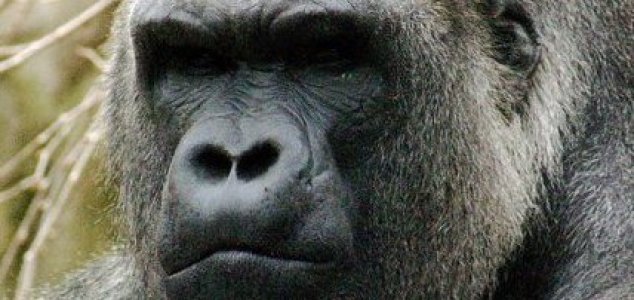Palaeontology
January 6, 2016 · 11 comments
11 comments

Gigantopithecus was a very large, very strong species of ape. Image Credit: CC BY-SA 2.5 Kabir Bakie
The species lived across parts of what is now Southern Asia and roamed the planet from around nine million years ago until its disappearance somewhere around 100,000 years ago.
Exactly what caused the demise of these huge forest-dwelling apes has long remained a topic of debate among scientists and to date only a few teeth and jaw fossils have ever been found.
Now however scientists in Germany have put forward a new theory suggesting that the reason the species died out was because it failed to adapt its diet to the changing Pleistocene landscape.
"Due to its size, Gigantopithecus presumably depended on a large amount of food," said Dr. Hervé Bocherens. "When during the Pleistocene era more and more forested areas turned into savanna landscapes, there was simply an insufficient food supply for the giant ape."
Source: Huffington Post | Comments (11)
Real-life King Kong died out due to its diet
By T.K. RandallJanuary 6, 2016 ·
 11 comments
11 comments
Gigantopithecus was a very large, very strong species of ape. Image Credit: CC BY-SA 2.5 Kabir Bakie
A prehistoric species of giant ape went extinct because it couldn't adapt to its changing environment.
Much bigger than a man, the enormous primate Gigantopithecus was twice as large as any of today's great apes and stood up to 10ft tall while weighing in at more than 1,100 pounds.The species lived across parts of what is now Southern Asia and roamed the planet from around nine million years ago until its disappearance somewhere around 100,000 years ago.
Now however scientists in Germany have put forward a new theory suggesting that the reason the species died out was because it failed to adapt its diet to the changing Pleistocene landscape.
"Due to its size, Gigantopithecus presumably depended on a large amount of food," said Dr. Hervé Bocherens. "When during the Pleistocene era more and more forested areas turned into savanna landscapes, there was simply an insufficient food supply for the giant ape."
Source: Huffington Post | Comments (11)

The Unexplained Mysteries
Book of Weird News
AVAILABLE NOW
Take a walk on the weird side with this compilation of some of the weirdest stories ever to grace the pages of a newspaper.
Click here to learn more

Support us on Patreon
BONUS CONTENTFor less than the cost of a cup of coffee, you can gain access to a wide range of exclusive perks including our popular 'Lost Ghost Stories' series.
Click here to learn more
United States and the Americas
UK and Europe
Earth, Disasters and the Environment
Space: Astronomy and Astrophysics
Total Posts: 7,604,477 Topics: 316,290 Members: 201,819
Not a member yet ? Click here to join - registration is free and only takes a moment!
Not a member yet ? Click here to join - registration is free and only takes a moment!

























Please Login or Register to post a comment.